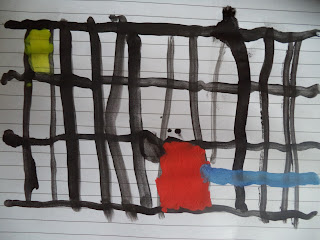I find the Indian Railways endless fascinating at different levels and in different ways. This post is about policy and strategic direction.
Here are some recent media mentions in the Hindu:
Free Wi-Fi on trains
http://www.thehindu.com/opinion/blogs/blog-hypertext/article4472521.ece
Comparisons to other train systems, especially China and the 'need for speed'
http://www.thehindu.com/opinion/open-page/why-are-we-on-slow-track/article4491959.ece
A good piece by a senior railway man
http://www.thehindu.com/opinion/lead/saving-the-railways-for-the-aam-aadmi/article4415597.ece
Here are a couple of examples of an alternate direction that seems to me more sensible that some of the ideas above:
- In Switzerland and Germany the rail systems are trying to get to a state where there is hourly connectivity from every point to every other point. Ie, I can be at any station, and expect that in the next 1 hour there will be a train and appropriate connections that will take me to any other station in the system
- The Shivneri Volvo system between Pune and Mumbai. In this system there are buses leaving at a very high frequency, like one every 10 minutes or so. You can land up at the bus station without a ticket, and unless you are unlucky, catch a bus leaving in the next half hour at the max.
The following factors are important in my opinion:
- The Railways will continue to be a volume game in the times to come. Ie, given how the Railways are critical for the middle and lower classes, there will be huge pressure of numbers on the railways up to the next couple of decades atleast. How well the railways cope with this pressure is the main measure of its success
- The railways are a climate-friendly transportation option so we should be expanding and investing in them for the future
Here's my thinking:
Lets stop worrying about high speed trains. Lets not go down the path of proliferation of train types - passenger, express, superfast, shatabdi, jan shatabi, garib rath, duronto, double-decker and more. Lets instead plan towards a consistent system where trains are similar, reasonably fast, and there are a high number of connections between points in the systems at regular, predictable intervals. Between Chennai and Bangalore for example we now have Lalbagh, Brindavan, two Shatabdis, two express trains and a new double decker (besides other trains that travel this route as part of a longer journey). Would it be simpler to revamp this with say 10 trains, 5 during the day, 5 night, leaving at regular intervals and with similar facilities and travel times. Would this make safety management simpler, which will be crucial as the network gets more and more crowded ? As traffic keeps inexorably increasing, the number of trains would increase in proportion and in an obvious way, while keeping the template the same.
Can we go down this direction at a national scale too. Keep the focus on volume, cleanliness, consistency and safety.
Can we reduce the glaring disparity between compartment classes somewhat ?
There are many problems with the above but if the basic model is sound then these could be solved. A couple of issues below:
- How to serve the gazillion tiny stations all over the country if we are doing away the distinction between passenger and express trains ?
- Some of the romance and fun of rail travel would be lost, in doing away with things like train names, and making things similar and consistent. I say that we can find other ways to keep the fun alive. Not being able to travel because there are not enough seats is no fun anyway.


















